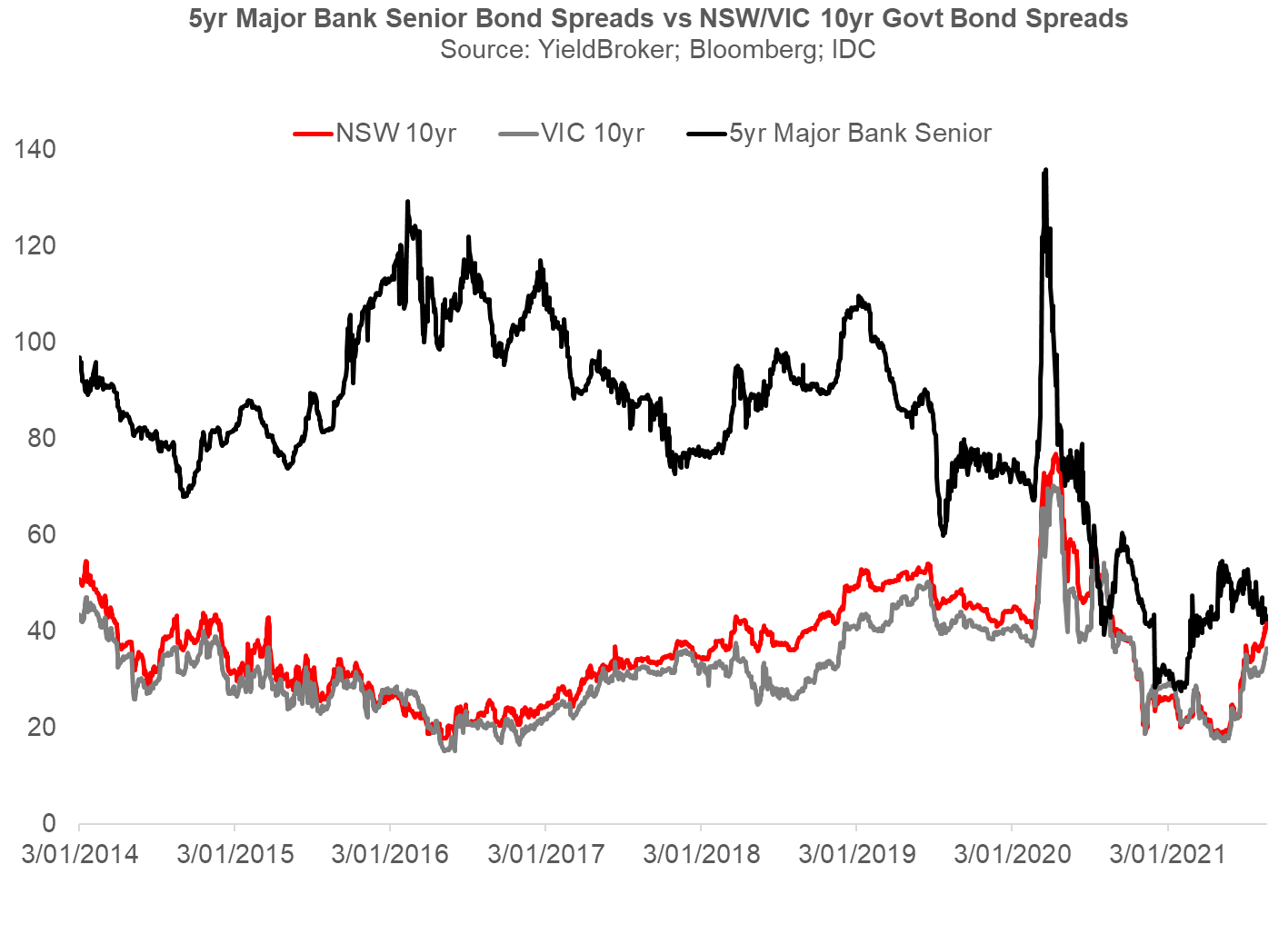Is the RBA taper vs non-taper decision a non-event for September?
The truth is that the increasingly most probable "slow taper" vs "non-taper" outcomes in terms of the actual $ value of RBA bond buying (and hence the ultimate stock of bonds they hold) are not that materially different: they are all large, and well above the original consensus for QE3 (as the RBA has noted through media proxies). Importantly, the "slow taper" path is also bigger than the RBA's previous base-case.
On the other hand, if the RBA went with the faster taper 4/3/2/1 schedule, which was clearly its base-case in July, it would buy $105bn (a harder taper 4/3/2/0 schedule was still worth $92bn). Note that this was broadly in line with consensus at the time, which the RBA highlighted in its minutes (ie, the consensus).
Both these slow taper schedules give $147bn and $139bn of RBA buying, which are actually similar to the taper-deferral purchase programs and well above the original consensus estimates for QE3 (recall CBA was at $50bn for QE3 and UBS was around $75bn with consensus $75bn to $100bn before July --- CCI has always been at $100bn plus).
It would appear that a gradual 4/4/3/2/1 schedule is the most likely glide-path because the RBA is starting to stress via the media again that it wants to be the slowest central bank to tighten policy, especially following the downside surprise on wages, amplified by the recent shuttering of economic activity across more than half the metro population.
The RBA might also start to focus on the fact that unlike other countries, Australia does not have any natural immunity; that is, say 10-20% of the population who have already had COVID-19 as is the case in countries like the US and UK. This means that effective vaccination rates for Australia will have to be higher than the rest of the world at perhaps 80%-90% of the total population. It also implies a more sluggish recovery from Delta in Q4 this year and Q1 next year.
If the RBA wants to avail itself of some creativity, which would be frankly surprising, there are loads of options in terms of finessing the semis/govvies mix and extending the buying envelope to relax these capacity constraints, as Ricardian Ambivalence outlines.
They could, for example, run with a 4/4/3/2/1 schedule and recalibrate the semis (up) and govvies (down) to say 30:70 (from 20:80 currently) to alleviate pressure on both semi spreads and swap spreads, especially given semi spreads over Commonwealth government bonds have recently increased by some 25-30 basis points back to 2019 levels (and to levels that are generally higher than those that prevailed over the 2014 to 2019 period, as the chart below shows). In fact, for the first time in history, benchmark NSW and Victorian government bond spreads over Commonwealth government bonds are actually as high, or higher than, the spreads on lower rated and much more illiquid 5-year major bank senior bonds.

This is mainly because banks have been buying each other's bonds as a replacement for government bonds in their Committed Liquidity Facility (CLF) portfolios, which is a form of regulatory arbitrage that will likely be closed down over time by APRA and the RBA (see more on this here).
We have been closely watching key RBA media proxies, which are telling a similar story: Glynn (WSJ)/Maley (AFR)/Rodrigues (CentralBank Intel)/McCrann (News Ltd) are all directly or indirectly pointing toward the RBA offering the concession to the current recession of a 4/4/3/2/1 schedule, or $147bn of buying, which they note is more than the market had originally expected (the RBA has obviously been stressing this point regarding a bigger stock of bonds that had been priced).
In making these decisions, the RBA might also be mindful of the recent upward pressure on swap spreads, which seems to be driven by QE's overweight to govvies that is no longer justified by either the relative stock weights, the flow of supply, or the fiscal stimulus.
2 topics

